| I love shocking people in the exam chair. And a sure fire way to do it is to tell a lifelong nearsighted person they got better. They never believe me until I tell them why and how they got better. You see nearsighted people hate going to the eye doctor because it is almost a guarantee that they are going to get the bad news of “you got worse” or “we need to add some more power to your contacts”. I have good news for all you young nearsighted people. It eventually gets better. Women in their early thirties and men in their late thirties will virtually always get a little less nearsighted. The reason is because the lens inside your eye continues to grow from the time you are born til the time you die. It has new cells laid around it like an onion every year. And around mid 30′s the increased thickness of the lens leads to a farsighted shift in vision. So if you are nearsighted you become less nearsighted but if you are farsighted you become more farsighted. | "I can't believe |
|
0 Comments
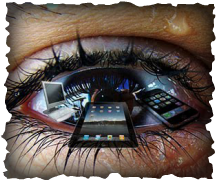 From computer monitors to iPads, tablets and phones, it is not unusual for many of us to spend most of the day reading digital screens. But staring at them for hours every day can cause significant eye strain, blurry vision, headaches, burning or watery eyes. Individual vision problems and poor office ergonomics contribute to the rise in eyesight trouble, and as computer use duration increases, so do the symptoms. Some tips to help ease computer related eye problems are:
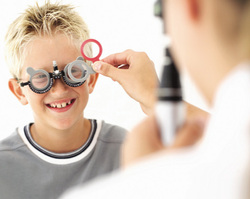 It is estimated that 80% of learning for children comes through their visual system. It is also estimated that 80% of children begin school without a comprehensive eye exam. Good vision has been identified as a major factor of a child’s ability to learn and succeed. Since kids need good near and distance vision at school, as well as good peripheral coordination, it just makes sense for parents to have them tested before they start school. Most children won’t complain about visual problems, because they don’t realize what “normal” vision is. The American Optometric Association (AOA) actually recommends your child have their first complete eye exam at six months, if there are no apparent eye problems. Check out the AOA’s helpful article “Steps in Infant Vision Development.” www.aoa.org/x9420.xml#1 Call our office at 850-769-1404 to set up an appointment for you and your child! 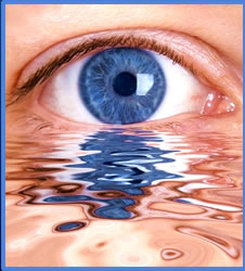 Melanin is a brown pigment granule that is in everyone’s body except albinos. It is responsible for skin color and eye color. The more melanin you have in your skin the darker you are. Likewise, the more melanin you have in your iris the darker they are. Blue eyed people have very little melanin in their iris and brown eyed people have a lot more. Green and hazel eyes are in between. People ask me all the time how does brown pigment make your eyes look blue? This is where it gets a little more scientific. There are different layers of the iris. A layer in the front of the iris is called the stroma and a layer in the back is called the epithelium. Blue eyes and brown eyes have the same amount of pigment in the epithelium. But if the stroma cells have very little pigment then the shorter blue wavelength of light interacts much more than red wavelengths and the blue light radiates throughout the iris causing it to look blue. 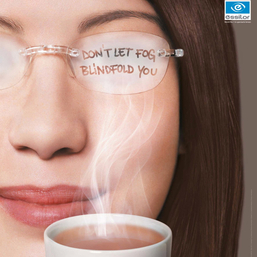 Yesterday's rain inspired this blog. Everyone was walking around Pier Park with fogged up eyeglasses. Why do glasses fog? Fog is a water vapor which is condensed into tiny droplets lying close to a surface, like lenses in glasses, which limits visibility. Most of the time, eyeglasses become foggy when you move from a cold to a hot environment. For us Floridians, this typically happens when we move from the cold AC inside to the warm and humid outside environment. At the end of 2011, Essilor came out with a new product, “Optifog”. How does it work? The lenses have a unique fog repellent property that is enhanced with a specific concentrate called the “Optifog Activator”. Each week, you apply this activator to the lenses. This will repel all the tiny water droplets off the lenses resulting in a pair of truly fog-free lenses. This will decrease distortion, blur, and contrast lost from the fog. If you’ve been frustrated by foggy lenses, we would recommend the addition of Optifog technology to your next pair of eyeglasses or sunglasses. Come by Academy of Eye Care and ask about it today!  Tired of fishing reading glasses out of your purse to read a menu or your phone? You’re not alone! If you’re too young to look old, you might consider one of the newer alternatives to the traditional lack of focus as we age. Dr. McQuivey, our optometrist, fits many happy patients with contact lenses that help correct your need to read. Monovision is one option, where one eye is fit for distance vision, while the other will correct your near sight. The brain adjusts to this new way of seeing the world, and many patients are very comfortable with this arrangement. There are also new multifocal contact lenses available, which use a different method for allowing clear sight far away and up close. Call us today at 850-769-1404 to set up an appointment for a comprehensive eye exam, where the health of the eye will be assessed as well as your need for correction. 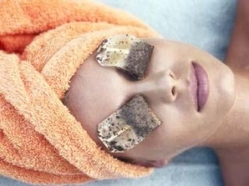 If you are troubled by the reflection in the mirror, don’t be dismayed. Circles under the eyes are caused by your body, not your sleep habits! Your body is constantly breaking down hemoglobin, and sometimes the by products, which are dark like a bruise, pass through the capillary beds and will show through the translucent skin around your eyes. If you are also very tired, have pale skin, and have experienced memory problems, you may also be anemic, which is a very common health issue. If you are experiencing these symptoms you should seek the advice of your doctor. Getting good exercise and eating iron-rich foods such as red meat, hummus or baked beans may also be helpful.  Gone are the days when athletes with mild prescriptions would just take off their glasses and play. Proper vision enhances competitive edge by improving hand-eye coordination not to mention being able to see what you are doing! Protective sports eye wear is not just important for those needing vision correction. 600,000 sports-related eye injuries are documented every year in the US, according to the Public Health Association. Wearing proper eye protection is critical to reducing the risk of sports related eye injuries that could be devastating to vision. Be proactive and protect yourself and your little athletes with sports vision wear!  What frame will look good on me? This is one of the most common questions that we get asked in our optical. You should consider three main points when choosing an eyeglass frame for your face shape:
There are some general guidelines to follow in choosing a frame, but honestly you just have to TRY THEM ON! Our staff will be glad to help you find what looks good on you and fits your personality. Visit this site for more information: http://goo.gl/RZJfK  Spring is here and allergies are going to be in full swing within a few weeks. I always see a dramatic increase in eye infections this time of the year secondary to contact lenses and allergies. Pollen from flowers and trees causes the release of histamine and other inflammatory mediators in the body and the eyes. Some people find that their symptoms can be amplified if they are wearing contacts lenses. Contacts also increase the chance of getting an eye infection. There are a few things I always recommend doing this time of the year to help prevent an allergic reaction or infection:
|
Academy of Eye CareWe want to provide you with information about your eyes and keep you updated on what we are doing. Archives
September 2013
Categories
All
|
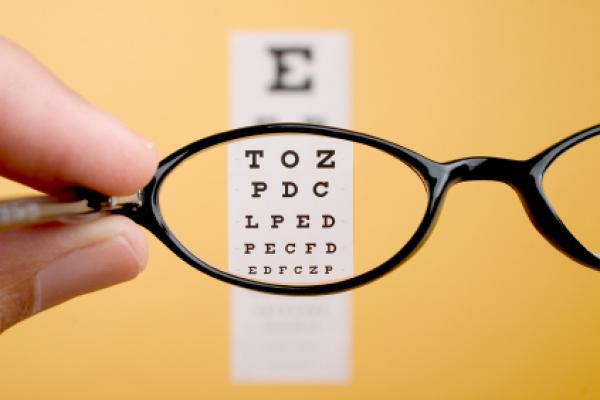
 RSS Feed
RSS Feed
